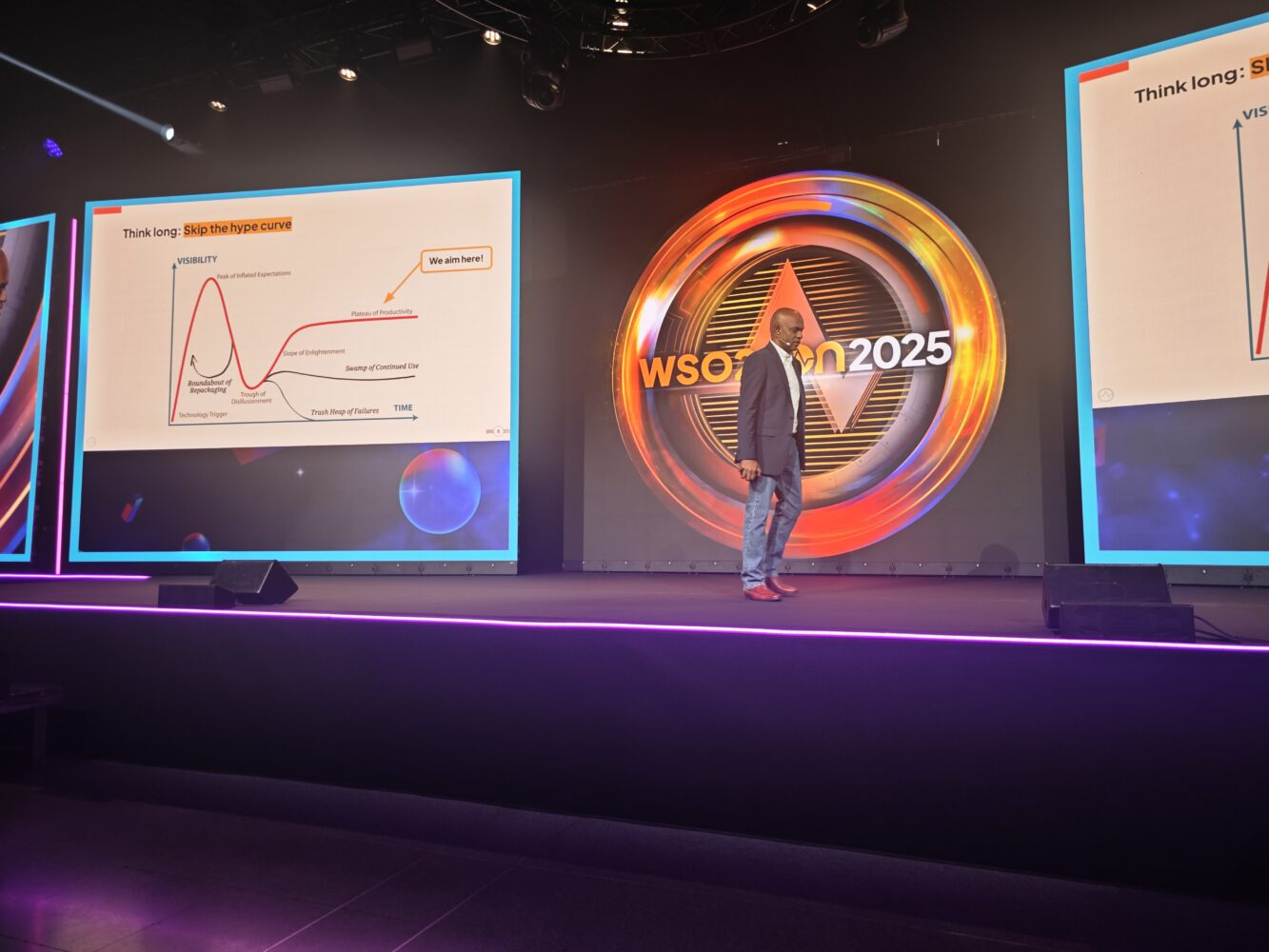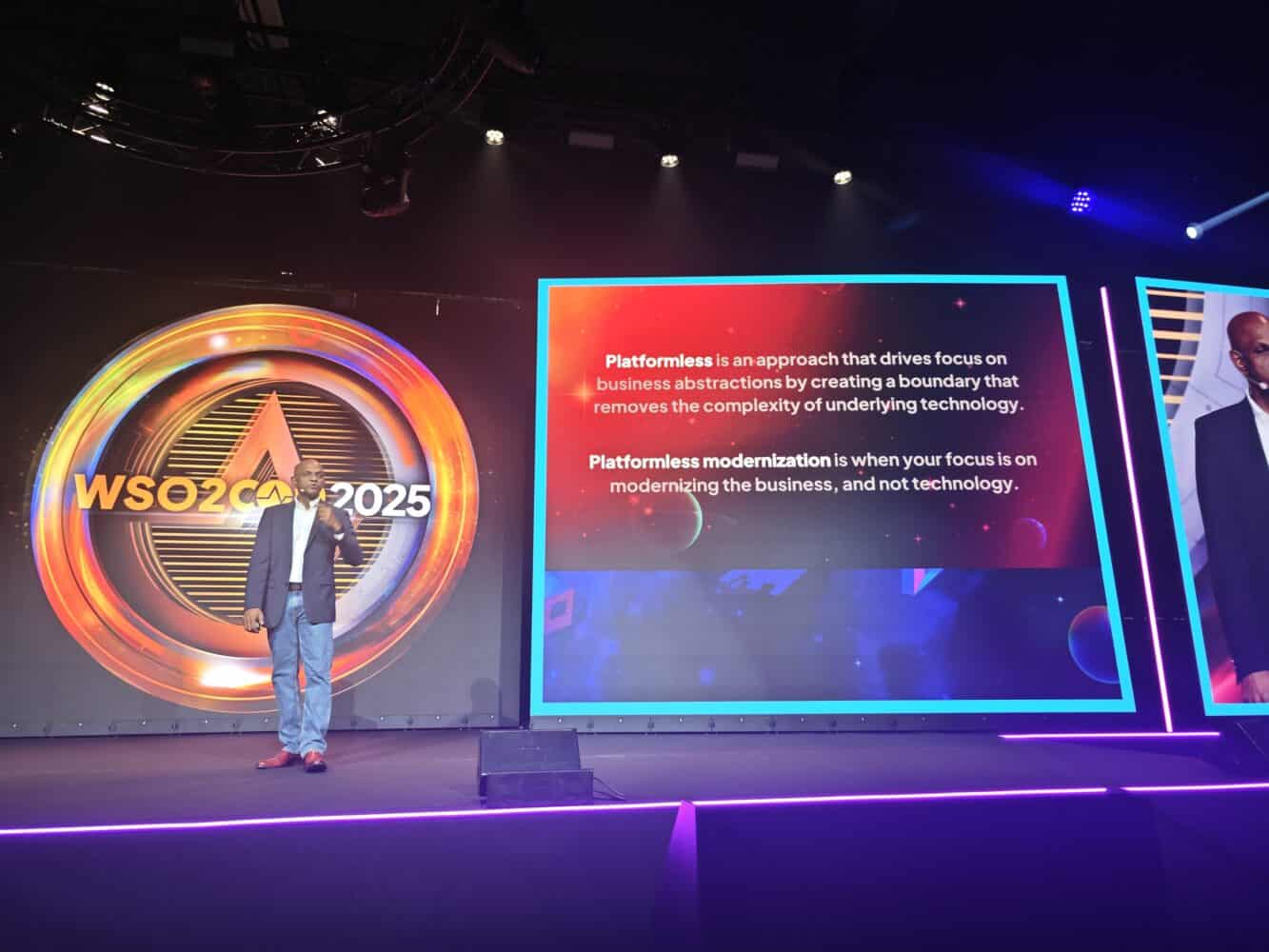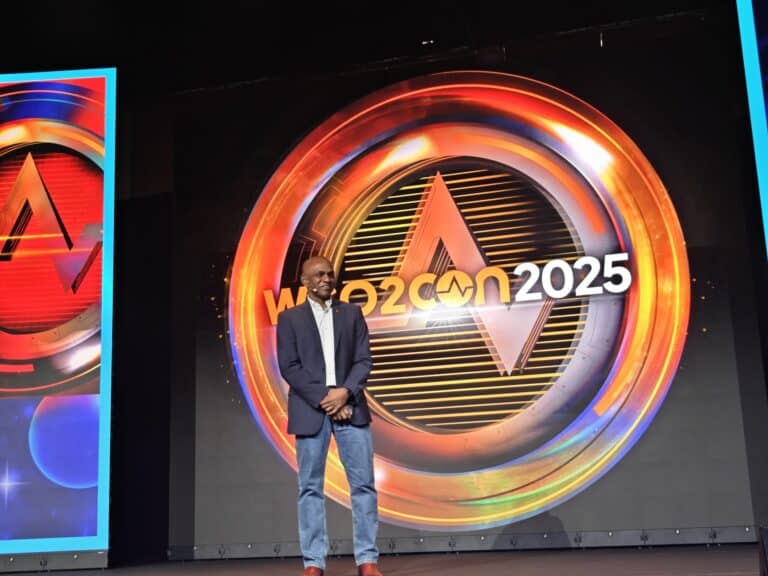Intelligent applications are the norm today. Simultaneously, this increases the number of APIs and integrations, each quite complex. The systems, data, and services related to the intelligence era must connect in the right way. At WSO2Con in Barcelona, WSO2 is showing what it can do to simplify the nevertheless difficult landscape.
APIs are the means of connecting enterprise IT environments. That’s where WSO2, as a kind of middleware, can help. It allows the Application Programming Interfaces of systems and AI solutions to exchange data. Consider, for example, building the latest AI agents. Those must connect to LLMs, vector databases and systems, so the layer below the agents. Then there is the layer above, the software application, which requires integration. With this integration work comes a heavy workload related to management, maintenance, and documentation. WSO2 provides solutions that reduce the management burden and simplify integration processes.
By now, WSO2, in full Web Services Oxygen, has been doing this for about 20 years. An important step in this approach over all the years: the technology is open source from the beginning. Of course, the approach has changed significantly over the years; even at the WSO2Con 2025 event in Barcelona, they show that the innovation is far from over. The complexity around APIs and integrations can and should be further reduced. WSO2 is now paying close attention to both the development environment and the operational side of integrations.
Integrating like a ballerina
One big step the company plans to take is the introduction of the WSO2 Ballerina Integrator. This is an open-source integration environment that combines a graphical low-code interface with a traditional pro-code approach, allowing developers to choose which workflow best suits their project requirements. As a result, integration work can sometimes be done quickly and visually. Should some additional work be required, this complex integration logic can be completed by writing code.

The Ballerina Integrator supports more than 200 pre-built connectors. These should be the foundation for more easily connecting APIs, AI agents, databases, and other systems, regardless of whether they run on-premises, in a private cloud, or in a hybrid environment. WSO2 deliberately chooses this broad support so IT teams can modernize existing systems without requiring major infrastructure changes.
The integrator also includes a feature that helps developers formulate integration requirements in natural language. This support, via a co-pilot, automatically generates test cases based on the specifications entered. In this way, development speed is increased, and integration test reliability is enhanced.
Integration platform as a service
In addition to the Ballerina Integrator, WSO2 is coming out with the new enterprise solution Devant by WSO2 AI iPaaS. This builds on the integration Platform as a Service (iPaaS) story that was hugely popular several years ago, providing a single platform for integration work. The new WSO2 platform is designed to simplify the development, deployment and management of integration flows. Devant uses artificial intelligence to automate operational processes while providing insight into real-time data. This allows IT teams to react faster to changing conditions and identify bottlenecks in data exchange.
Devant supports creating AI agents and applications based on retrieval-augmented generation (RAG). This allows large language models (LLMs) to leverage additional data sources, increasing the accuracy of the information generated. Combined with CI/CD features, Devant should simplify the management of integration flows.
AI-native capabilities in the software stack
During the WSO2Con opening keynote by CEO and founder Sanjiva Weerawarana, much of the focus is on the open-source nature of WSO2. In the new update of the open source platform, a lot of AI is coming to the entire software stack. The idea is to enable companies to develop more intelligent applications and services. The new approach helps bridge the gap between experimental projects and operational implementations. This is because many AI initiatives remain stuck in the concept phase due to lacking a suitable platform to implement them at scale.
Following the ballerina, the revamped software stack uses a programming approach combining natural language with traditional code. This allows developers to work faster and more efficiently because they do not have to rewrite the entire programming code each time for minor changes. By integrating AI into all layers of software development – from initial code to management and security – organizations should be better able to deal with changing requirements.

The updated software stack also includes enhancements to management tools. The platform now offers automated checks for compliance with internal standards and external regulations, using AI-driven processes to monitor whether APIs and integration logic comply with applicable guidelines.
Choreo is the developer platform
A further step toward easier management of IT solutions is the update of Choreo, WSO2’s Internal Developer Platform (IDP). The new version of Choreo is available as a cloud service and downloadable open-source software. This gives organizations the flexibility to deploy the platform in a way that best suits their specific infrastructure needs. Choreo targets teams responsible for platform management and operational processes. The platform centralizes development, operational and management processes, allowing stakeholders to collaborate better.
The update to Choreo focuses on CI/CD pipelines, allowing changes to go into production faster and with less risk of error. In addition, the update comes with features for monitoring and managing data within Kubernetes clusters. Through “self-service” capabilities, IT teams can make changes themselves without relying on a central management function.
In addition, Choreo now offers machine learning-driven insights. By analyzing operational data, the platform can identify patterns in cost and performance, allowing employees to proactively respond to unexpected expenses or anomalies in their IT environment’s operation. Furthermore, WSO2 pays attention to security so that access to sensitive data and applications can be better controlled.
API management as engine for AI
In addition to CEO Sanjiva Weerawarana, a portion of the keynote was reserved for Chief AI Officer Rania Khalaf. She will talk during the conference about the influence of AI on API management. To this end, WSO2 is offering updated versions of the open-source WSO2 API Manager and the Bijira AI API Management SaaS solution, two tools for simplified management of APIs.
The latest version of the WSO2 API Manager focuses on automating standards compliance within the API environment. AI continuously checks that APIs comply with internal guidelines and external regulations. This reduces the need for manual checks and ensures that deviations are quickly detected and corrected.
The API Manager now has new features for managing multiple gateways. This means that development teams can house multiple API gateways—including those from external parties—in a single management environment. Through a centralized control panel, designers and operations teams get an overview of the entire API lifecycle, increasing the system’s manageability.
The new API Manager is also more suitable for dynamic routing of API requests. The system can determine which AI model is best suited to handle a particular request based on predetermined criteria, which take into account aspects such as cost, availability, and performance. This approach ensures that API requests are processed in a targeted manner, contributing to the overall stability of the API environment.
Bijira AI API Management builds on the capabilities of the API Manager. This cloud-based solution targets organizations looking for a flexible way to manage APIs without heavy infrastructure investment. Bijira is a management environment that supports the entire lifecycle of APIs, from creation and deployment to monitoring and compliance. It also relies on AI-driven processes to optimize compliance and API management.
What stands out about how WSO2 is shaping the future of APIs and integrations is that it is taking a realistic approach. For example, Sanjiva Weerawarana indicated during the keynote that he does not have an end goal, which is almost impossible in the tech world. Instead of capitalizing on buzzwords or vague visions of the future, the company focuses on the concrete challenges organizations experience when working with multiple APIs and integrations. This is crucial to realizing intelligent applications.
Tip: WSO2 tries to bring order to the chaos of AI API management
